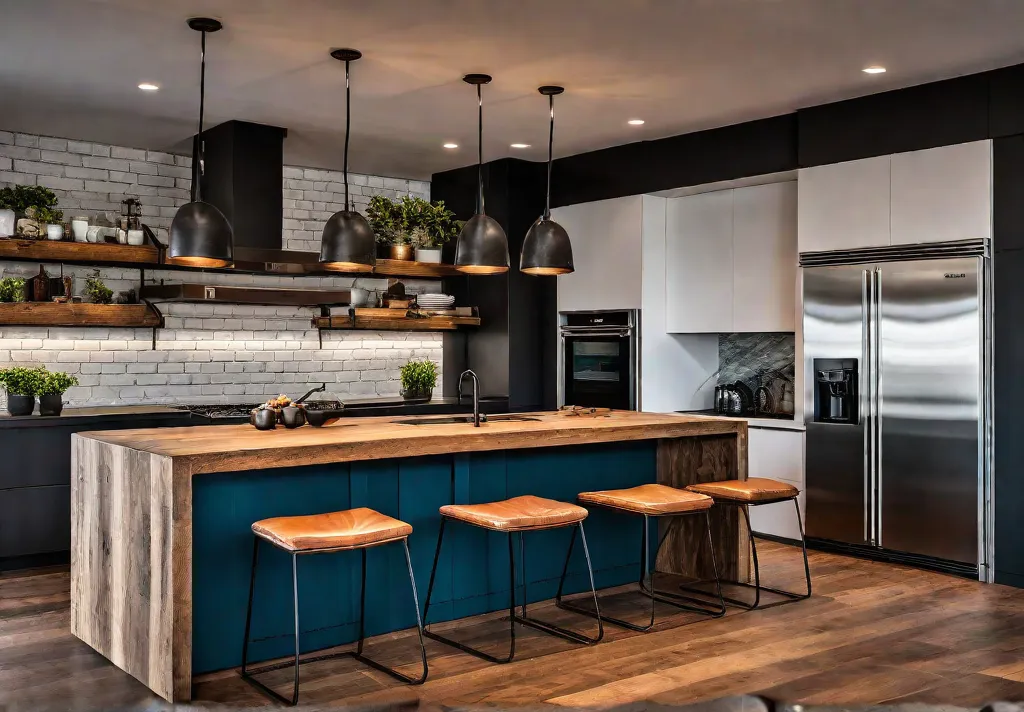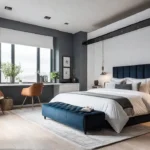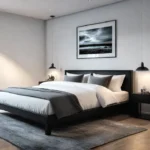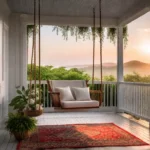In a world where the modern and the rustic often seem worlds apart, a new design renaissance is emerging – one that seamlessly blends the two in a harmonious dance of styles. From the gritty allure of industrial chic to the cozy warmth of farmhouse modern, today’s interiors are embracing the art of contrast and juxtaposition. At the heart of this movement lies the kitchen island, a centerpiece that invites us to explore the unexpected beauty found in the marriage of raw, time-worn elements and sleek, contemporary lines.
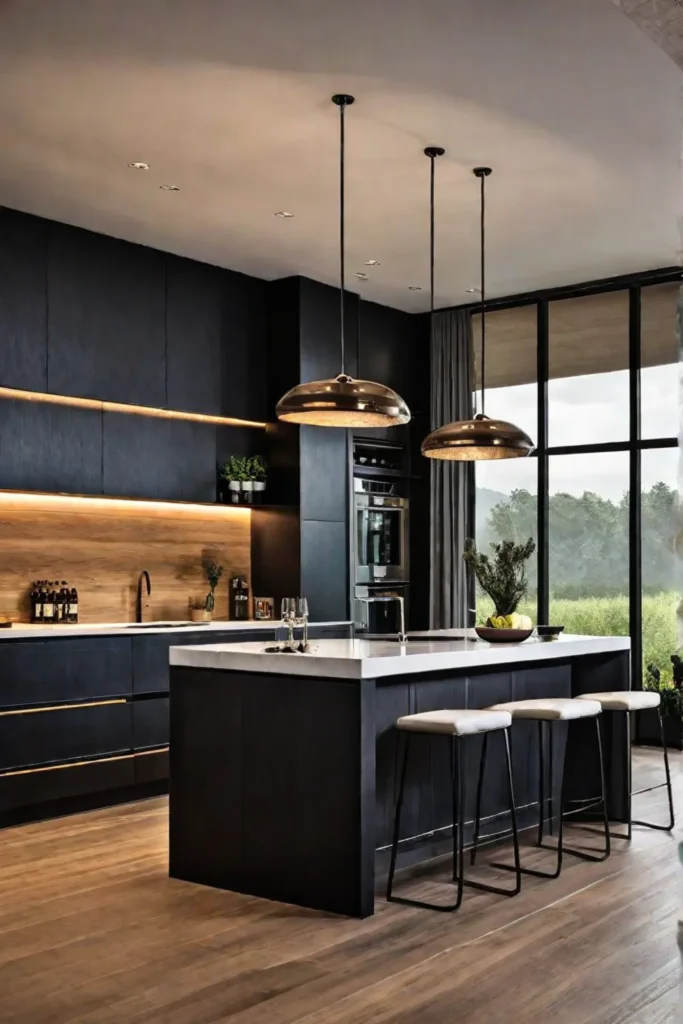
Join me on a journey through five captivating kitchen island designs that masterfully intertwine the old and the new, the rough and the refined. We’ll discover how to infuse our spaces with soul and character while maintaining a sense of minimalist sophistication. Whether you’re drawn to the edgy urban vibe of industrial chic or the serene simplicity of Scandinavian design with a rustic twist, these island styles offer a canvas for self-expression and a celebration of the artisanal, the handcrafted, and the beautifully imperfect.
Embracing Industrial Chic
Peel back layers of sleek modernity to reveal the raw bones of a space, and you’ll uncover the soul of industrial chic design. This aesthetic trend embraces the gritty allure of converted factories and warehouses, infusing living spaces with an edgy, urban vibe.
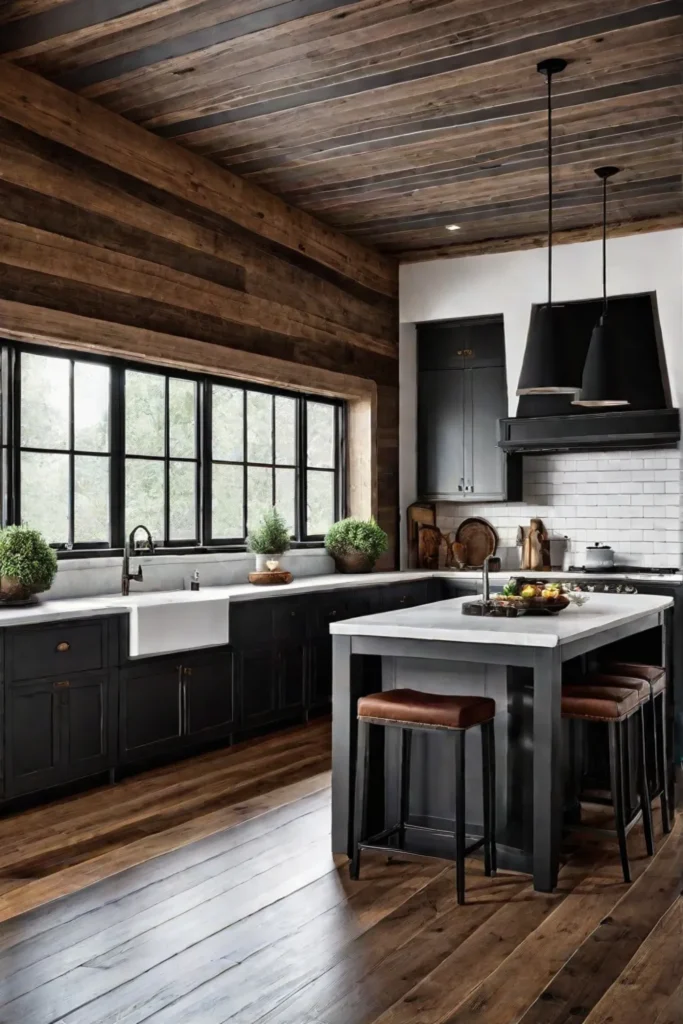
Materials and Finishes
The hallmarks of industrial style are reclaimed materials proudly showcasing their well-worn patinas. Repurposed wood planks, exposed brick walls, and distressed metal accents form the rugged foundation. Concrete surfaces and steel beams lend a utilitarian, unfussy air.
To keep this aesthetic from feeling cold or austere, layer in cozy textiles and plush upholstery. A plump leather sofa or shaggy woven rug provides an inviting counterpoint to the hard, industrial elements.
Lighting and Accents
When it comes to lighting, the unfinished, bare-bulb look is quintessentially industrial. Suspend vintage-inspired Edison bulbs or caged metal pendants above a kitchen island. Exposed piping and conduit add to the stripped-down, functional aesthetic.
Incorporate salvaged factory remnants as decor accents—think antique gears, pulleys or signage. These found objects lend a sense of history and authenticity. Juxtapose sleek modern appliances against raw, distressed surfaces for a balanced industrial vibe.
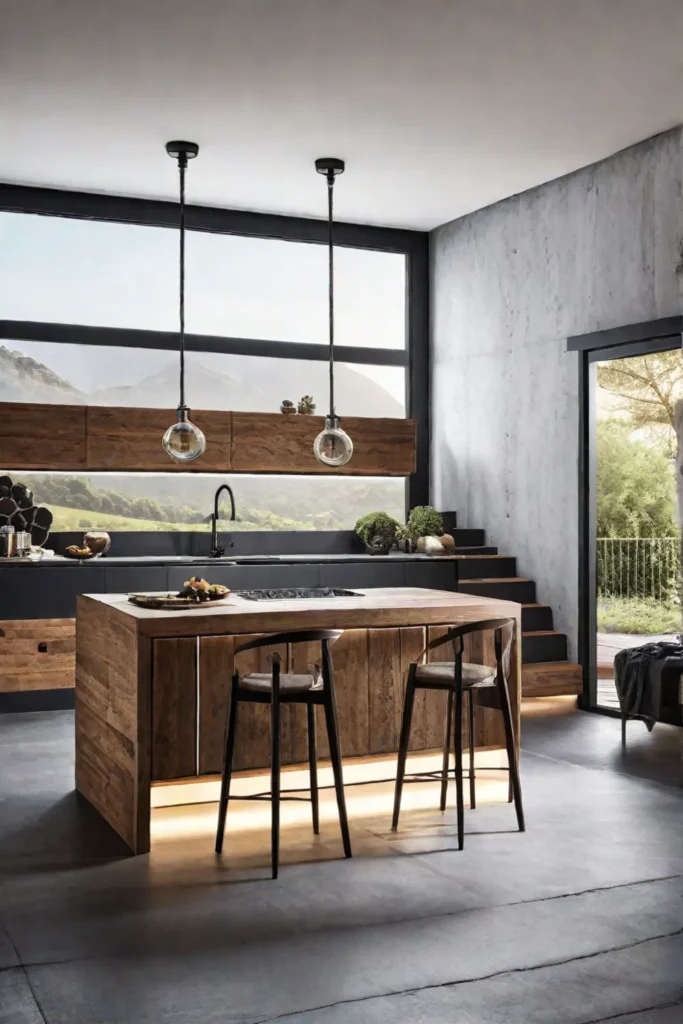
The key is to embrace imperfect, utilitarian pieces that reveal the beauty in their well-worn character. Let the rough-hewn textures and patinas tell a story of the space’s gritty, hardworking past. With an artful hand, you can craft an edgy yet warm, livable environment that seamlessly melds past and present.
If industrial chic channels an urban, loft-dwelling aesthetic, farmhouse modern takes its cues from the cozy comforts of rural living. This style marries…
The Warmth of Farmhouse Modern
There’s something so inviting about the farmhouse’s modern aesthetic – a sense of comfort and nostalgia that feels like coming home. This style seamlessly blends the rustic charm of farmhouse living with contemporary clean lines, creating a warm and cozy yet refreshingly pared-back look.
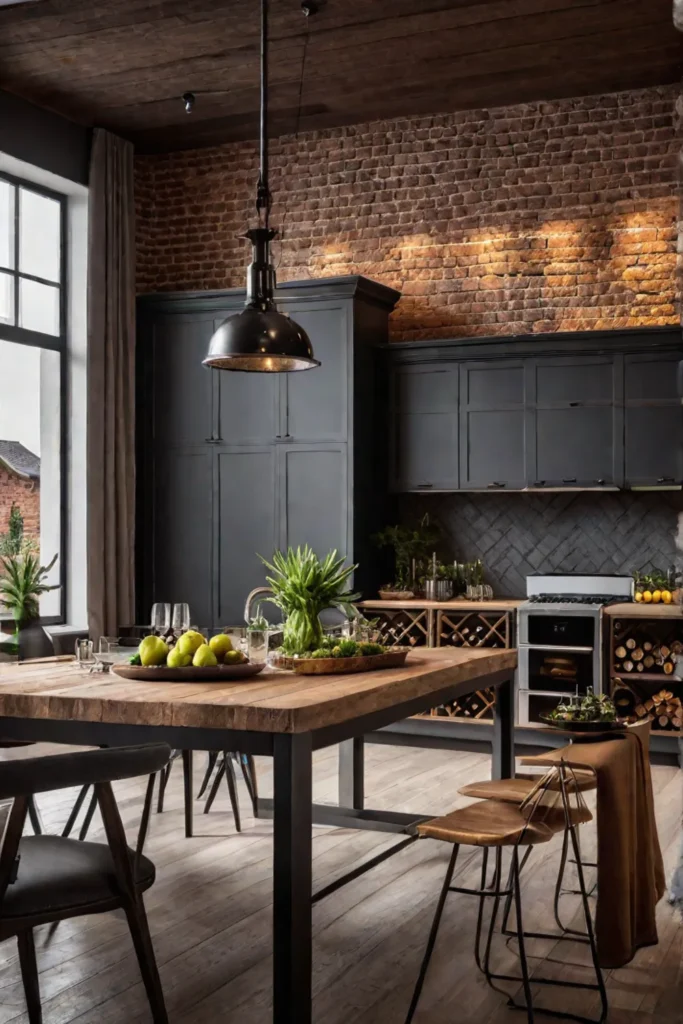
Color Palette and Textures
The farmhouse’s modern palette draws from nature’s earthy hues – warm whites, soft grays, and weathered wood tones. These neutral shades provide a calming backdrop for pops of black and the occasional muted accent color like sage green or dusty blue. Textures are key, with raw materials like reclaimed wood, galvanized metal, and woven textiles grounding the space.
Incorporating Vintage Elements
What truly gives Farmhouse Modern its soul is the thoughtful layering of vintage pieces. Scour flea markets and antique shops for timeworn treasures like an antique butcher block, a weathered farmhouse table, or a set of enamelware crockery. These well-loved items add instant patina and character.
When designing your farmhouse modern kitchen island, consider a white or cream-painted base with a thick butcher block countertop. Open shelving is perfect for displaying those vintage cookbooks and ceramic vessels you’ve collected over the years. Mix in modern elements like sleek barstools and industrial-style pendants for a balanced look.
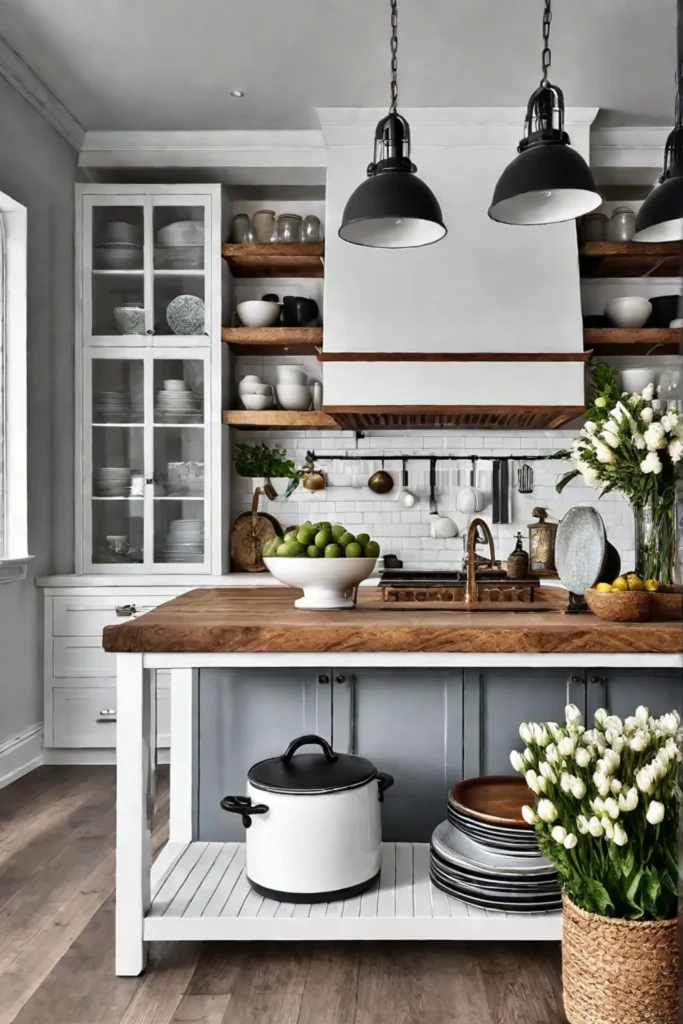
The true beauty of this style lies in its effortless warmth and livability. Don’t be afraid to let things feel a bit undone and imperfect – that’s where the charm comes in. With its nostalgic nod to simpler times and focus on natural materials, Farmhouse Modern creates an atmosphere that’s as welcoming as a warm hug.
Transitioning into the next section on minimalist rustic design, we’ll explore how to channel nature’s raw beauty through an edited, understated approach…
Minimalist Rustic: Simplicity Meets Nature
The minimalist rustic style strikes a beautiful balance between clean, streamlined design and the warmth of natural elements. This aesthetic creates a serene, uncluttered space that feels grounded and inviting.
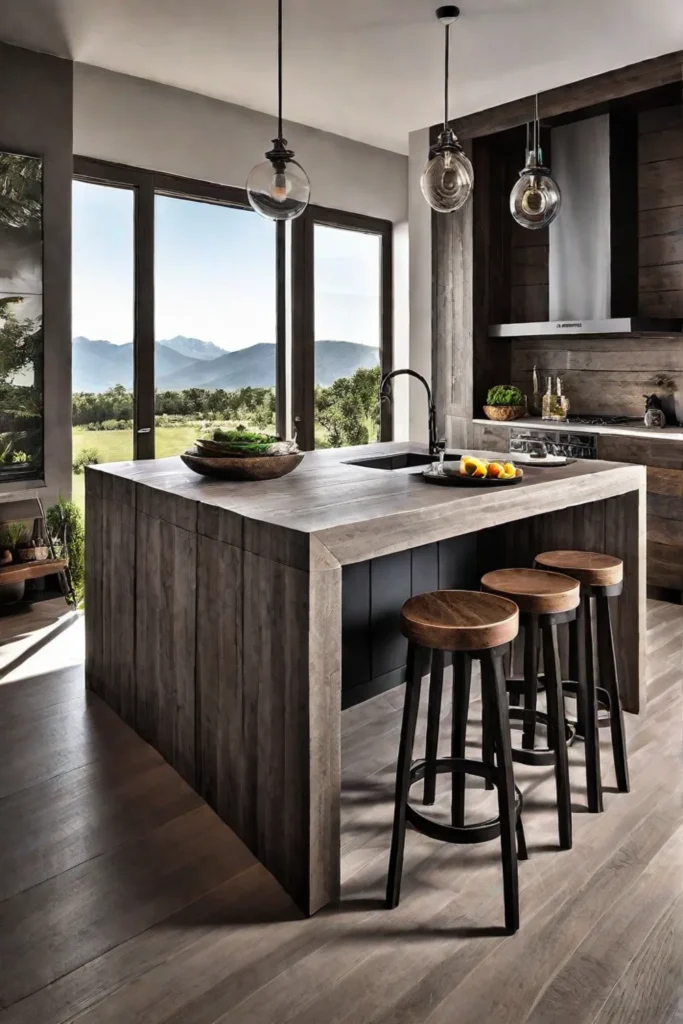
Streamlined Design and Functionality
At its core, minimalist rustic embraces simplicity and functionality. A rectangular island with minimal hardware is the perfect centerpiece, allowing the natural textures and materials to take center stage. Opt for a solid wood countertop in a warm, honey tone or a sleek concrete or soapstone surface for an understated touch of elegance.
Emphasizing Natural Textures
What sets minimalist rustic apart is its focus on organic materials and textures. Incorporate elements like rough-hewn wood beams, woven rattan pendants, and handcrafted pottery for an artisanal, earthy vibe. Lush greenery and botanical prints bring the outdoors in, creating a soothing, biophilic ambiance.
When curating your minimalist rustic kitchen, remember that less is more. Stick to a muted, natural color palette and invest in quality, long-lasting pieces that showcase expert craftsmanship. This style is influenced by the simplicity of Scandinavian and Japanese design principles, where every element serves a purpose and unnecessary clutter is eliminated.

By blending clean lines with tactile, nature-inspired accents, you’ll create a space that feels both modern and grounded – a sanctuary that rejuvenates the senses and nurtures the soul.
Looking ahead, the next section explores how to infuse Scandinavian simplicity with a rustic twist, bringing warmth and character to a minimalist aesthetic.
Scandinavian Simplicity with a Rustic Twist
Scandinavian design is renowned for its light, airy aesthetic and emphasis on natural materials. By incorporating rustic elements, you can add warmth and texture to this minimalist style, creating a kitchen that feels both serene and inviting.
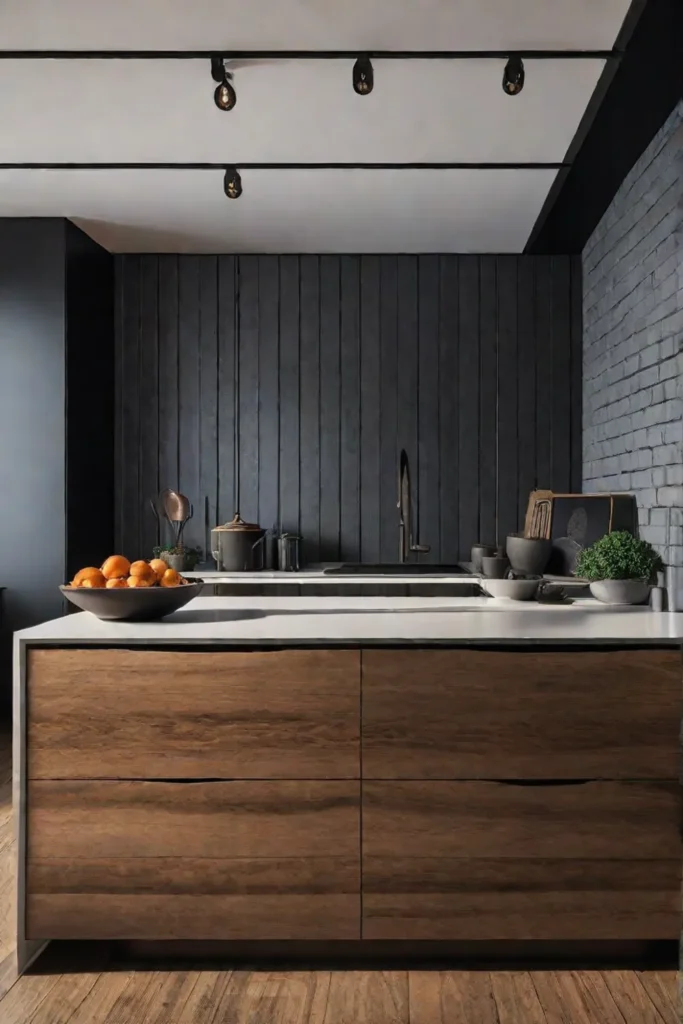
Light and Airy Design Elements
The foundation of Scandinavian design is creating a sense of spaciousness and connection with nature. Choose a light-colored wood for your kitchen island, such as birch or ash, to brighten the space and complement the clean lines. Embrace the principle of “hygge” by layering cozy textiles like sheepskin throws or woven blankets over the island stools.
Incorporating Rustic Textures and Accents
While Scandinavian design favors simplicity, rustic accents can add depth and character. Consider a reclaimed wood countertop for the island, allowing the knots and grain to bring organic beauty. Woven baskets, ceramic vases, or a vintage rug underfoot can introduce rustic textures without overwhelming the minimalist aesthetic.
Embrace the art of “lagom” – the Swedish concept of balance – by thoughtfully curating your rustic elements. A few well-placed pieces, such as a handmade ceramic vase filled with wildflowers or a woven wall hanging, can infuse your kitchen with warmth and personality.
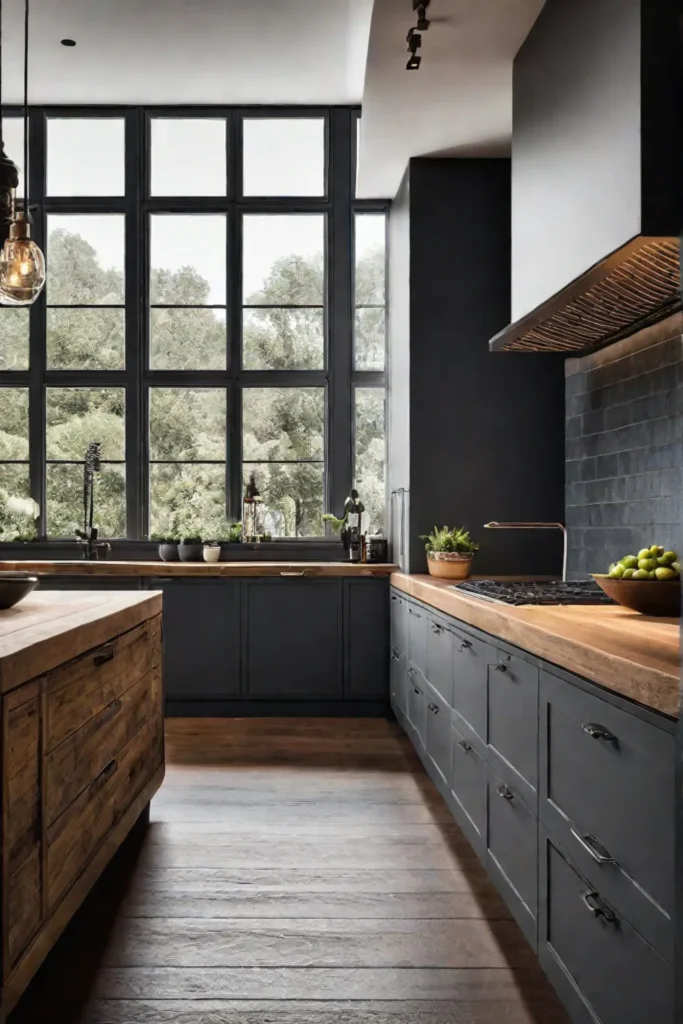
As you blend these two styles, remember to let natural light flood the space. Scandinavian design celebrates the connection to the outdoors, so keep window treatments minimal and embrace the interplay of light and shadow.
Crafting a Scandinavian kitchen with a rustic twist allows you to create a space that feels both serene and lived-in. By carefully curating natural materials, textures, and handmade accents, you can infuse your kitchen with a sense of warmth and character while maintaining the light, airy aesthetic that Scandinavian design is known for.
As you explore ways to blend rustic and modern elements, the key is finding the right balance that resonates with your style. In the next section, we’ll delve into tips for harmonizing these two aesthetics, ensuring your kitchen island design feels cohesive and truly your own.
Balancing Rustic and Modern: Finding Your Style
When it comes to blending rustic and modern elements, the key is to find the perfect balance that reflects your personal style and lifestyle needs. Interior design is a form of self-expression, and there are no strict rules – it’s about creating a space that feels authentically you.
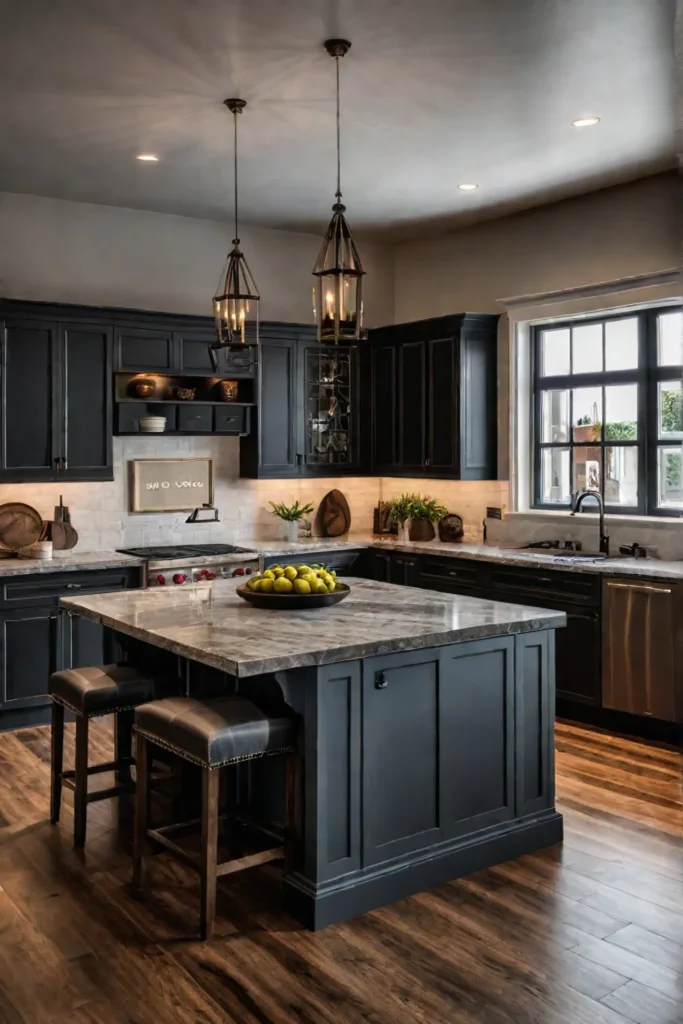
Considering Your Style
Start by reflecting on the overall aesthetic you’re drawn to. Do you gravitate more towards the warmth and character of rustic pieces or the clean lines and minimalism of modern design? Perhaps you love the juxtaposition of mixing both styles. Create a mood board to gather inspiration and define your desired look and feel.
Creating a Cohesive Design
Once you’ve established your style direction, it’s time to bring it to life. Work with a professional designer to ensure a cohesive and functional space that blends rustic and modern elements seamlessly. They can help you avoid common pitfalls, like creating a disjointed or cluttered look.
Here are some tips for achieving harmony:
- Use natural materials like wood, stone, and textured fabrics to infuse warmth and rustic charm.
- Balance these with sleek, modern lines in your furniture and architectural details.
- Incorporate vintage or handmade pieces alongside contemporary accents for an eclectic yet curated vibe.
- Play with contrasting textures, like pairing a rough-hewn wood table with sleek metal chairs.
- Layer in global-inspired textiles, artisan pieces, and lush greenery for an organic, worldly feel.

Remember, the most important thing is to create a space that resonates with you and reflects your unique style. Don’t be afraid to experiment and mix and match different elements until you find the perfect blend.
For more inspiration on blending design styles, check out magazines, blogs, and social media accounts that showcase eclectic, globally-inspired interiors. You can also visit local boutiques, flea markets, and artisan fairs to discover one-of-a-kind pieces that add character and personal meaning to your space.
Conclusion
As we’ve explored these five distinct yet harmonious kitchen island designs, one thing becomes clear: blending rustic and modern elements is an art form that transcends mere aesthetics. It’s a celebration of contrasts, a way to infuse our spaces with depth, character, and a sense of personal narrative. From the raw, gritty allure of industrial chic to the serene, nature-inspired beauty of minimalist rustic, these styles invite us to embrace the imperfect, the well-loved, and the handcrafted.
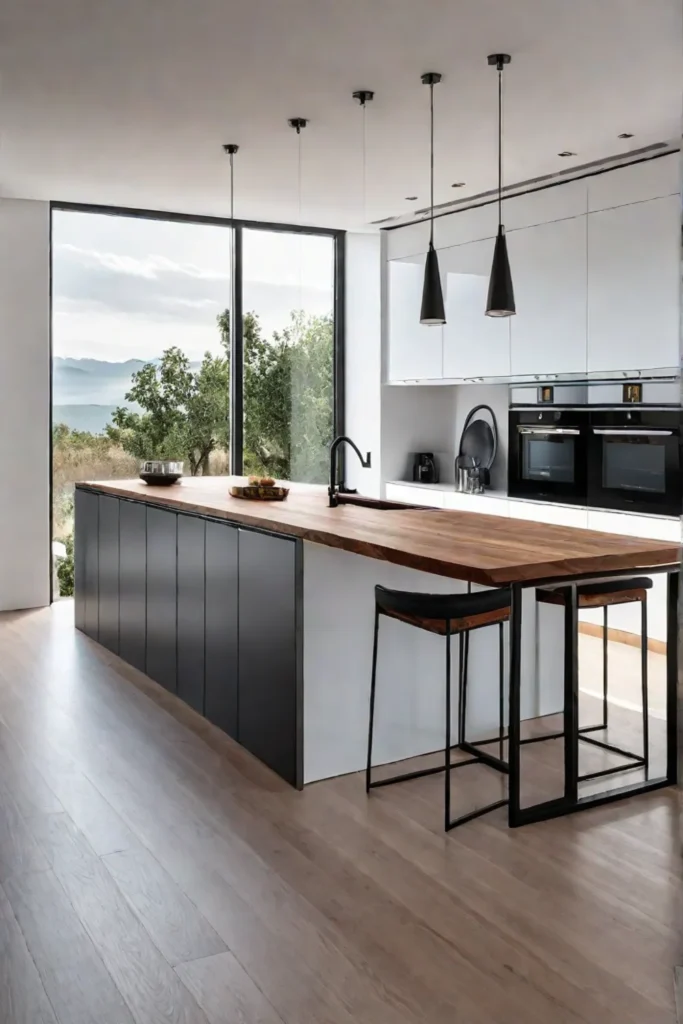
Perhaps the true magic lies in finding that delicate balance – a harmony where sleek, contemporary lines and rough-hewn textures dance in perfect synchronicity, creating spaces that feel both timeless and utterly of the moment. It’s a reminder that beauty can be found in the juxtaposition of opposites and that our homes should be a reflection of our unique stories and the layers of experiences that shape us.
So, as you embark on your design journey, embrace the unexpected. Let the patina of reclaimed wood and the warmth of vintage textiles mingle with the clean, minimalist lines of modern design. Curate a space that resonates with your soul, a sanctuary that celebrates the beauty of imperfection and the rich tapestry of life’s moments. For in the end, it is these artful blends, these seamless unions of styles, that transform mere living spaces into deeply personal, soulful havens – a true reflection of the diverse, multi-layered beings we are.
